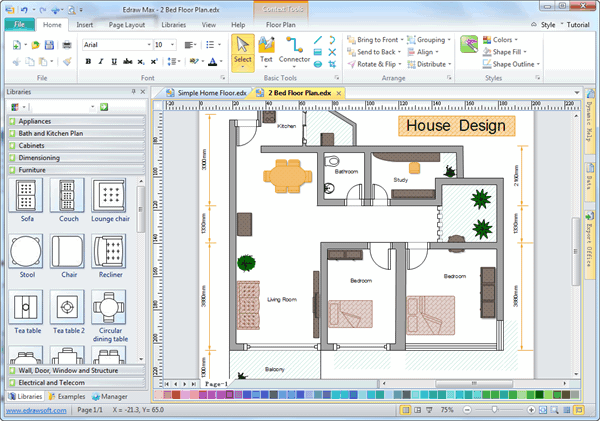

Generally locations of each stud are not included, due to a recognized universal building code. Floor joist locations, walls, and roof trusses are the overall detail of these plans. Framing plans include the basic skeletal structure of the home. Like every other drawings, the framing drawings (if provided) are also drawn to scale. Electrical diagrams may also include legends for heating systems, door swings and sizes, or even to specify certain finishes. From this diagram the electrician can determine the location of electrical outlets, fans, fixtures, light fixtures etc. Electrical diagrams usually include legend or Key on the page which explains what each symbols represents. By keeping the electrical layout on it’s own drawing the electrician can begin wiring the home without reading through the entire building floor plan.

These plans give further details about the location of footings, load bearing walls, steel rebar concrete reinforcements, and other structural elements the home requires to support the walls and roof.Įlectrical diagrams (if provided) can often be difficult to read which is why the drawings of the electrical layout of a home are often on a separate drawing. These exterior specifications can also provide details about the home’s exterior architectural styling.īasement floor plans (if provided) show how foundation and the structural integrity should be built. Elevation blueprints also include ridge heights, exterior finishes, roof pitches and other design aspects to give a general idea of the finished home. The purposes of these drawings are so that measurements can be taken for any necessary aspect and are drawn to scale and also indicate what the home will look like upon completion. The scale of each drawing is usually next to the title, however there are times when it is called out beneath the drawing or some other place on the page.īlueprints also generally include four elevation drawings of a home, the front, the rear and each side. Since the blueprints are drawn to scale if any portion needs to be changed or the contractor can scale the drawing to determine the right measurements to make the adjustments. Some details, like framing layouts or built-in details may be drawn at a scale of 1/8″ or even ¾”.Īny builder will know to look at the key provided on the house plan to determine the scale of the home. As a general accepted rule a ¼” scale means that for every ¼” on the plan will account for 1′ of actual length. This way the builder will be able to scale the drawing of the home and come up with the correct measurement.
FRAMING BLUEPRINT SOFTWARE HOW TO
How to read blueprintsīlueprint floor plans are typically drawn to a ¼” scale of the actual size of the home. We offer a wide selection of comprehensive and detailed blueprints in a wide assortment of house styles, home plans and designs to fit any life style whether you are looking to remodel or build a new home. Now complete floor plans can be stored and printed just as easy as printing this document from your computer.
FRAMING BLUEPRINT SOFTWARE SOFTWARE
The most common sizes of blueprints for the construction of a new home are 18″ x 24″ or 24″ x 36″īefore the advent of computers, blueprints were drawn by hand on vellum (a semi-transparent film which was specially processed and treated with ammonia), however, with the advances in computer software the process of designing a floor plan have greatly improved and floor plans have now become easier to create and duplicate. You can use your detailed blueprints to get precise estimates of the total cost to build your home.īlueprints are used to provide the builder with a complete set of two-dimensional instructions on exactly how to construct the home. Each set of blueprints should include floor plans plans for the foundation and information on footings and framing front, side and rear elevations roof plan electrical layout and kitchen cabinet layout and construction details.Įach set of blueprints include detailed documentation which fully describe the quality and specifications of the materials needed to complete the building of your home. Your blueprint plans and specifications are the documents used by your builder and contractors to instruct them on how to build your new home. Blueprints are exact detailed scaled drawings of plans of a home, building, or structure which include many more details than a basic floor plan. Blueprints are much more detailed drawings than simple Floor Plans.


 0 kommentar(er)
0 kommentar(er)
